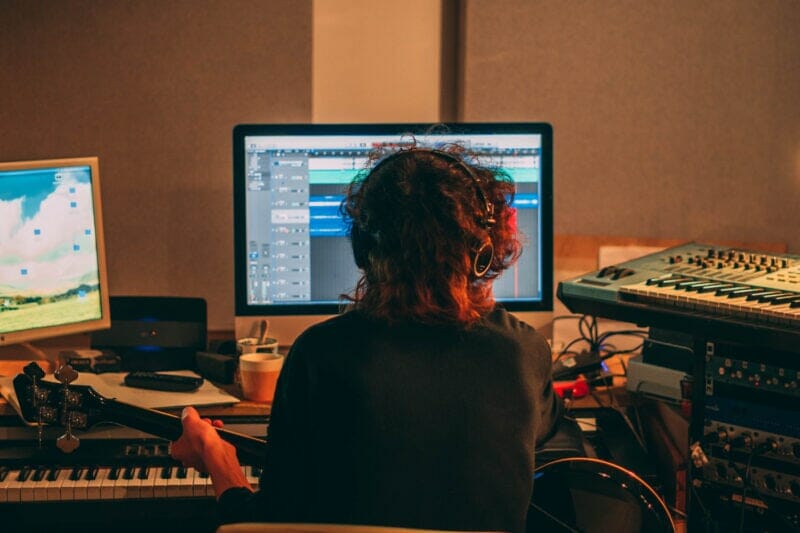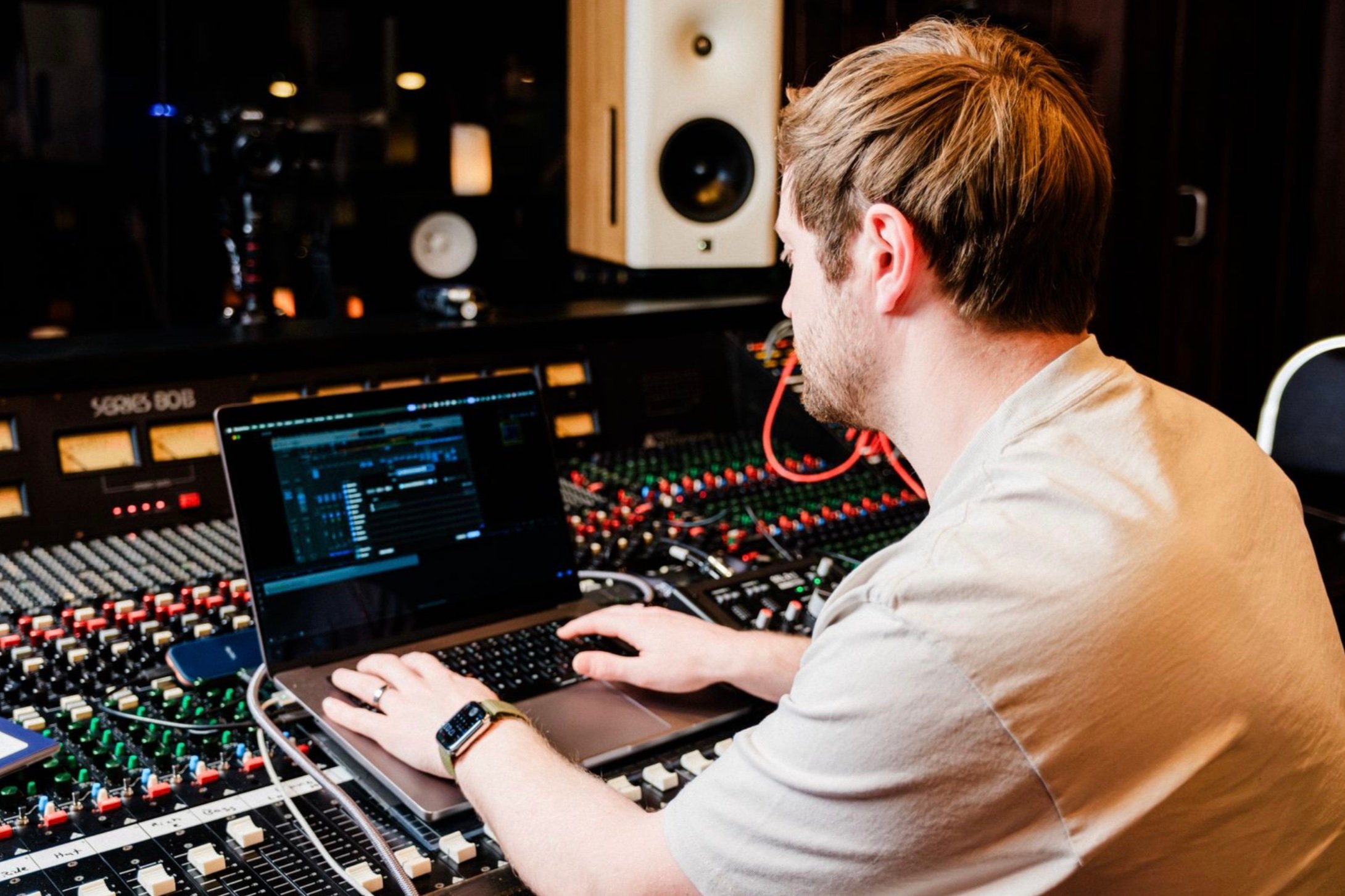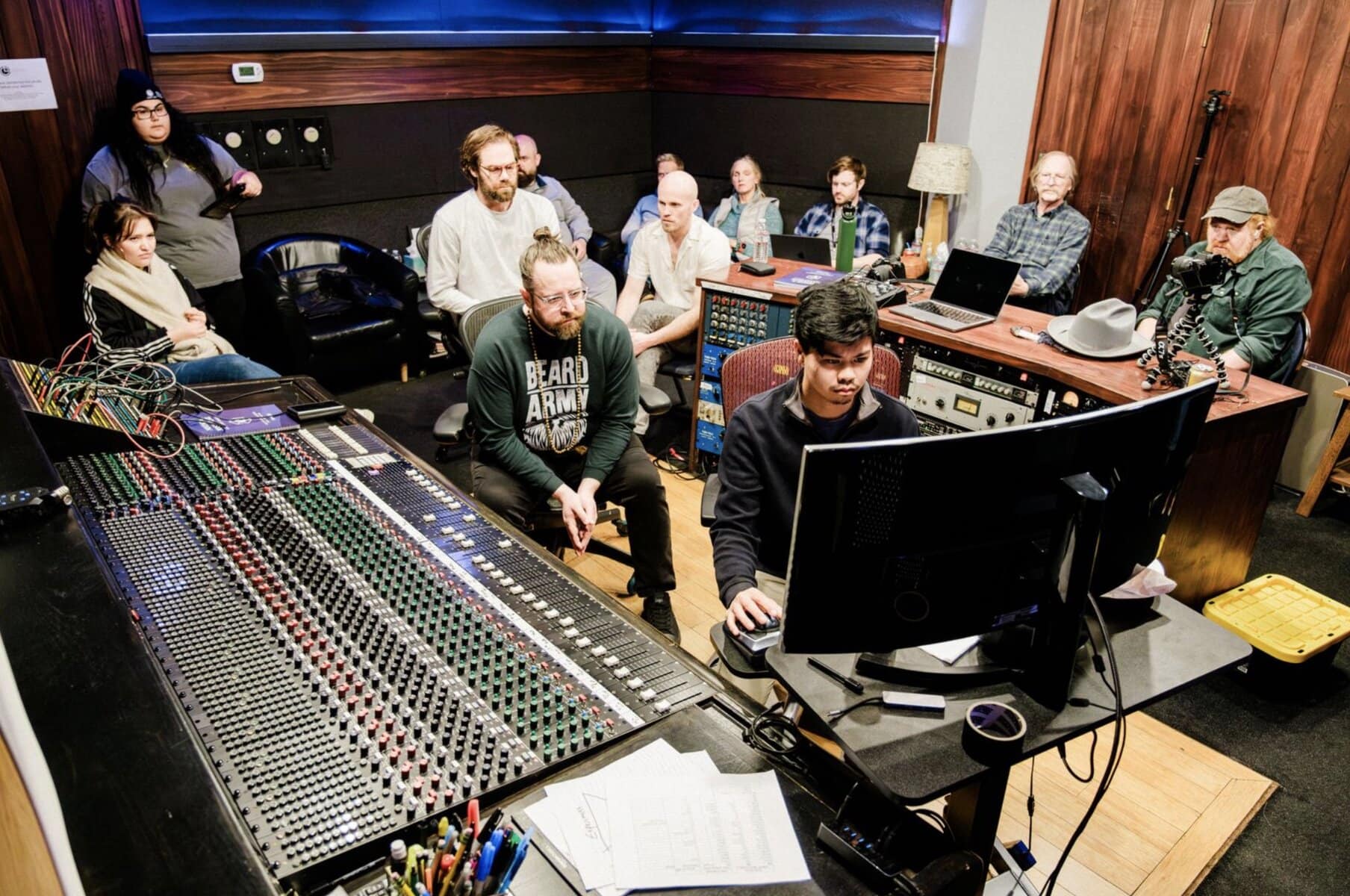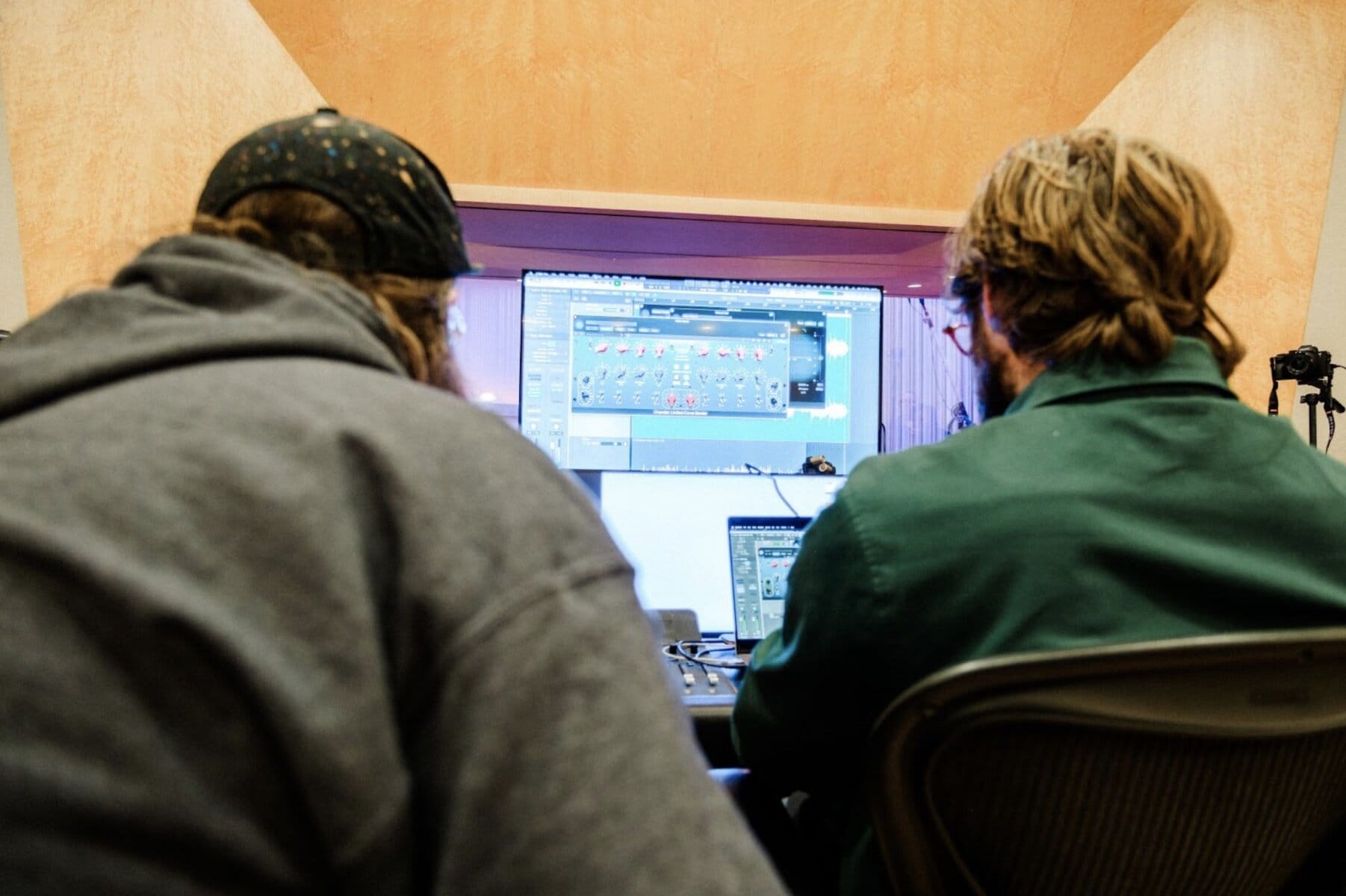I dare you to move your microphone, even in the slightest.
It will change the entire sound of your acoustic guitar.
Nearly every one of my recorded songs has acoustic guitar in it. And I’ve learned what not to do.
So this post will teach you everything you need to know to get started recording acoustic guitar.
A Quick Word About Your Recording Space
As a bedroom producer, your recording space is probably limited. Most likely, you can’t soundproof your studio like the pros do.
But you can do some things to make your space as recording-friendly as possible. If you do nothing to treat your space, your acoustic guitar will sound amateur.
Generally speaking, the smaller the room is, the more dead the acoustics will sound. And the bigger the room is, the more reverb you’ll hear.
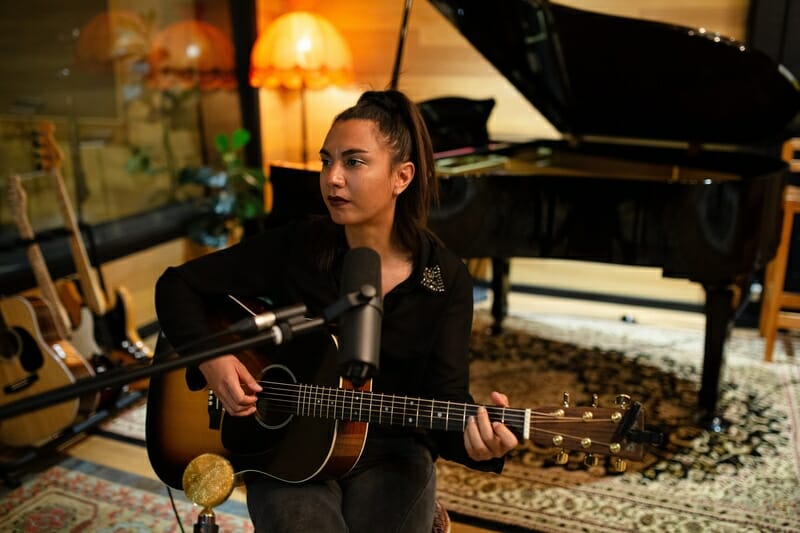
How can you get a good acoustic guitar sound in small rooms?
Small rooms can make your recording sound strange, like you’re in a small box (because you are). So it’s best to remove as many reverberations as possible.
This allows you to have more control over your sound by adding reverb and delay during mixing.
So it’s best to isolate the guitar as much as possible.
Hang absorption panels, or put pillows or blankets behind the microphone. Treat your room however much you can.
You can also double-track your guitar.
Record yourself playing the same part twice on two separate channels. Then mix them together.
You’ll get a full and wide sound.
But let’s say you have a big room. How do you get a pro-sounding acoustic guitar?
You may want to take the same approach as you would with a small room. Isolate your guitar as much as possible, then add reverb and delay in post.
However, if your big room has the reverb you want, go with it. Record in a way that captures the room sound.
Just know that any reverb your mic captures is in the recording for good. You can’t take it out during the mixing stage.
The Role of Acoustic Guitar in Your Song
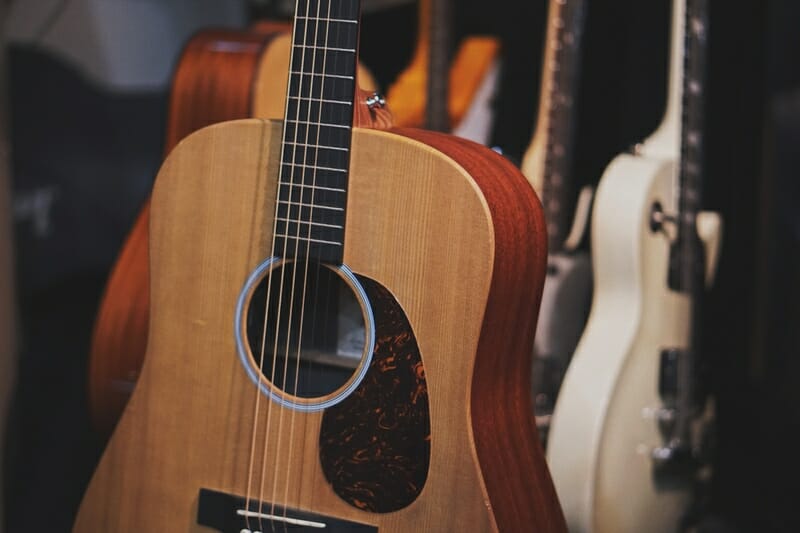
Before you start recording acoustic guitar, you have to ask yourself something. What is the guitar’s role in this song?
Will it be the featured instrument? Or will it play more of a rhythmic role?
For example, what if the guitar will be the band leader in a more folk-influenced song? You may want to place the mic(s) in a way that captures the guitar’s warmth and fullness.
And you may want to use an XY miking technique. (I’ll cover that below.)
On the other hand, what if your guitar will be a rhythmic element in a pop or rock song? You’ll probably mic it in a way that captures its brightness and energy.
I’ll go over the different miking techniques below and the best context for each.
How to Record Acoustic Guitar
There are three main ways to record acoustic guitar: with one mic, two mics, or direct-in.
One Microphone
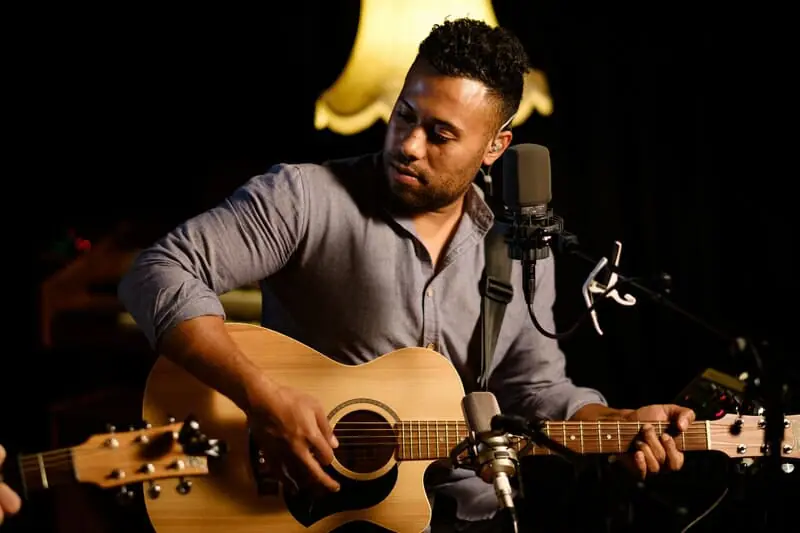
If you only have one microphone, you still have more than one option. It just depends on the type of mic you have.
Let’s say you have a microphone with a cardioid pickup pattern. You’ll want to point the mic at where the fretboard meets the body.
To get a tad more bass, point it more toward the soundhole. For more brightness, point it more toward the fretboard.
Place it eight to twelve inches (or two fists) away from the guitar.
The closer it is, the bassier it will sound. The further away it is, the more room sound you’ll get.
With a dynamic mic, you may have to bring it closer to the guitar as it won’t be as sensitive as a condenser mic. Condensers can pick up clear sound without being too close.
But let’s say you have an omnidirectional microphone. No problem.
Line up the mic with the soundhole, roughly a foot away from the guitar.
If you move it closer to the guitar, you’ll get more direct sound and less room sound. Moving it away does the opposite.
It doesn’t capture more or less bass because it’s an omnidirectional mic.
Whatever the case, you can record the same part twice. You’ll get the full, wide effect you get with a stereo miking setup.
Two Microphones
For a two-mic setup, you have more options and more control over your sound.
One of the most popular ways to mic an acoustic guitar is the XY technique. It’s popular because it’s effective.
Get two small-diaphragm condenser microphones. Align them so their bodies are at a ninety-degree angle to each other.
The tips of the mics (where the diaphragms are) should be on top of each other. This helps you avoid phasing issues.
Then point their axis at about the twelfth fret.
This allows one mic to get more low end and the other to capture more brightness. Then you mix those two signals together to get a balanced guitar sound.
Another option is the AB technique or the spaced pair technique. It’s when the mics are spaced out in order to capture the bassy and bright elements.
Point one mic (preferably a small-diaphragm condenser mic) at the twelfth fret. This will capture the brightness of the strings.
Point the second mic (preferably a large-diaphragm condenser mic) at the body between the bridge and butt of the guitar. This will capture the bass of the guitar.
Then pan the tracks in opposite directions, giving you a balanced, full sound.
Direct-in (not recommended)
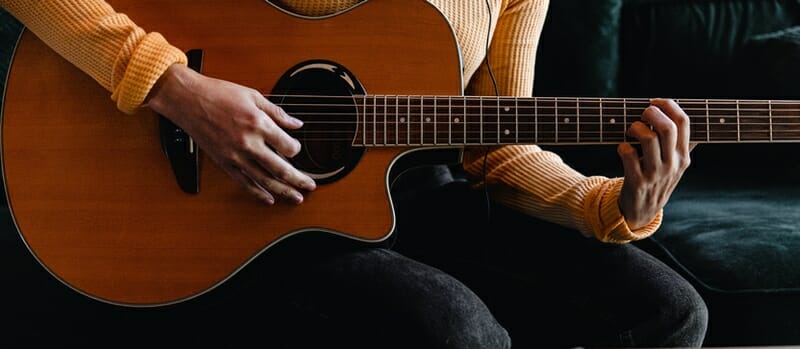
To be honest, recording acoustic guitar direct-in sounds terrible. It just sounds unnatural.
So if you can avoid it, please do so for the sake of your music.
But if you can’t yet afford a microphone, it’s nothing to be abashed about. Direct-in is your only option, so go with it.
You can record the same part twice to get a fuller sound.
It also may take more finagling during mixing. But with some work, you can make it sound all right.
The Most Important Element of Recording Acoustic Guitar
There’s one element that must remain constant. This is regardless of how many microphones you use or what miking technique you choose.
GIRATS.
No, it’s not a disease. It stands for get it right at the source.
It doesn’t matter how good your mixing skills are. If you don’t record a great-sounding acoustic guitar, your mix will stink.
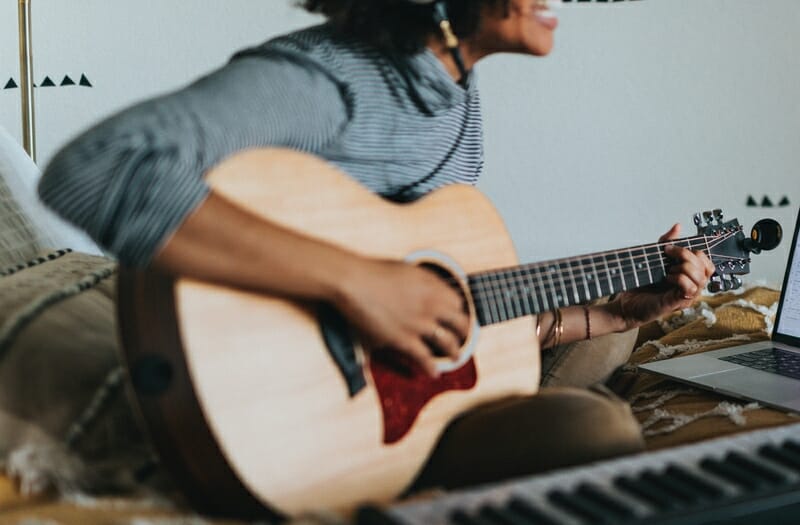
So these miking techniques involve trial and error.
You’ll need to practice different mic positions until you hear what you want to hear. Before hitting record.
Don’t ever say, “I’ll just fix it in the mix.” That’s a death sentence for your song.
You must record your acoustic guitar the right way the first time. And now you know how!


